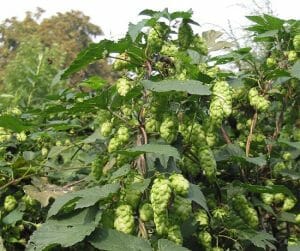Thigmotropism Definition
Also referred to as haptotropism, thigmotropism is the movement or change in orientation of a plant’s growth as a reaction to touch. The orienting factor is generally a hard surface that can change the direction of the plant’s growth or the growth of one of its organs. Thigmotropism can be in the form of opening or closing of parts of the plant such as the petals or leaves, the coiling of the plant around the surface, as well as other ways. Thigmotropism can be used in ways that increase the chance of a plant catching light for photosynthesis.
Thigmotropism is one example of tropism, which is the responding of a plant to environmental stimuli by growing towards or away from them. In other words, the reaction can be positive or negative. For instance, a stem can grow upwards towards the sun, and roots can grow away from an object in the soil. Other forms of tropism include phototropism, which is a plant’s response to light.
Examples of Thigmotropism
There are a few different ways that different climbing plants use to cling to surfaces and to change their own shape. The two examples of thigmotropism that will look at are the presence of tendrils, and the clinging of plants to surfaces using their roots.
Tendrils
A tendril is a thread-like structure found in climbing plants and used for support. It is a modified leaf, stem, or petiole, that possesses coiling as its form of thigmotropism. An example of a plant that has tendrils is the Humulus Lupulus, or the common hop, shown below. It is an herbaceous climbing vine that can grow quite rapidly, and whose tendrils wrap around the support in a clockwise direction.
Tendrils start off by bending in search of a surface to grow across. Once they find it, the part of the tendril that is in touch with the surface will produce a hormone called auxin, which stimulates a large region on the tendril that isn’t in touch with the surface to grow. In addition to auxin, the hormone ethylene aids in growth and controls the shape of the cells. The overall process results in the cells touching the support surface contracting or growing slower while those not touching it expand or grow faster. The different rates of growth on different sides of the plant lead to the coiling that occurs around the supporting object. In order for a plant or plant organ to undergo constant growth, continuous contact with the surface is needed. Finally, note that tendrils do need light in order to respond to touch, so they could receive a stimulus in the dark and only respond once light in available.
Clinging Roots
Some plants use their roots to climb up and cling to trees. The Hedera genus of woody plants, or what we refer to as ivies, is an example of that. It includes a number of species that creep on the ground or, when a suitable support surface is found, are climbing. Ivies often use trees as a surface for climbing, as in the picture below, and can be overwhelming and harmful when they grow over them in excess. They can also be considered as an invasive species in some regions. They have stem roots that change their arrangement and produce tiny root hairs to keep them fixed in place, and it is thought that ivies have additional means of staying strongly adhered to surfaces.
Types of Thigmotropism
Differential Growth
Differential growth is where one side of the plant is signaled to grow faster than the rest of the plant upon stimulation. Specialized epidermal cells bring about this different rate of growth, and it is seen in the growth pattern of tendrils. Differential growth can occur within minutes and is usually long lasting.
Rapid Contact Coiling
Rapid contact coiling, on the other hand, is an instant response. It happens quickly and doesn’t last long. An example of this is the folding of the leaves of some plant species upon being touched. In some cases, rapid contact coiling occurs first and is then followed by the slower and more permanent differential growth.
Related Biology Terms
- Geotropism – The movement or growth of a part of a plant in response to gravity.
- Hydrotropism – The movement or growth of a part of a plant in response to moisture or water.
- Nastic movements – The non-directional movement or growth of a part of a plant in response to an environmental stimulus.
- Orthotropism – The movement or growth of a part of a plant in response to an environmental stimulus, where this growth is directly aligned with the stimulus.
Quiz
1. What two hormones signal for the coiling of tendrils?
A. Ethylene and cytokinin
B. Auxin and ethylene
C. Auxin and cortisol
D. Auxin and cytokinin
2. Tropism generally refers to:
A. An animal’s response to touch.
B. A bacterium’s response to gravity.
C. A plant’s response to touch.
D. A plant’s response to different environmental stimuli.
3. Which of the following is not true regarding thigmotropism?
A. It is otherwise referred to as phototropism
B. It is a response to touch
C. It is otherwise referred to as haptotropism
D. It can allow plants to have better chances of reaching light for photosynthesis
4. Which of the following is true regarding rapid contact coiling?
A. It is one of five types of thigmotropism
B. It is slower than and doesn’t last as long as differential growth
C. It is faster than and doesn’t last as long as differential growth
D. It is a function of thigmotropism

